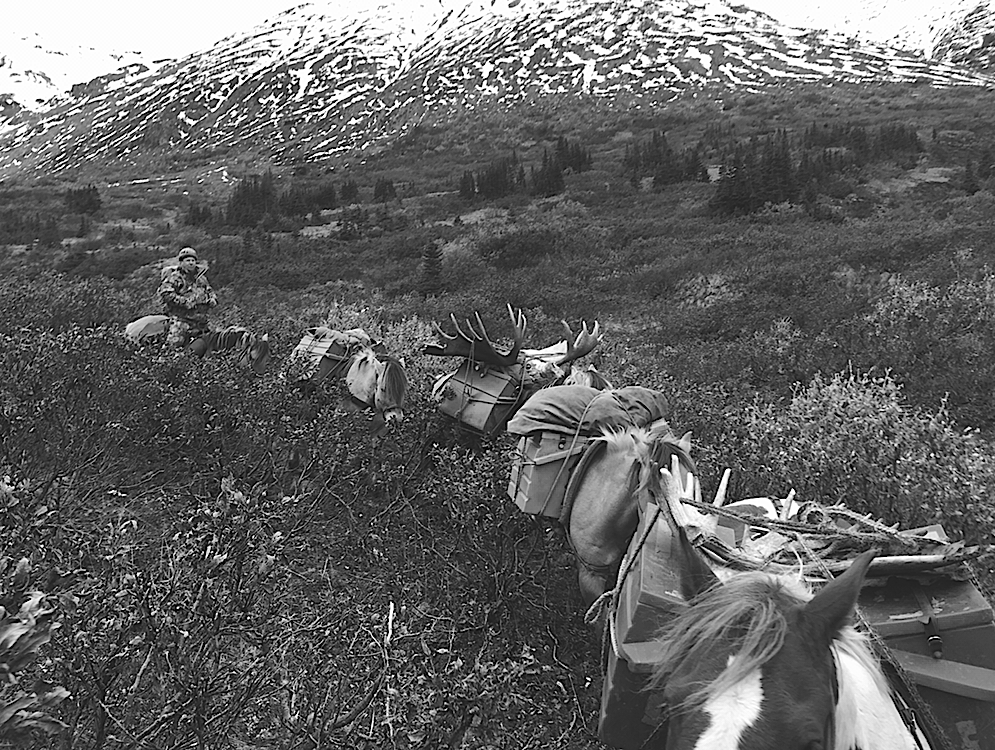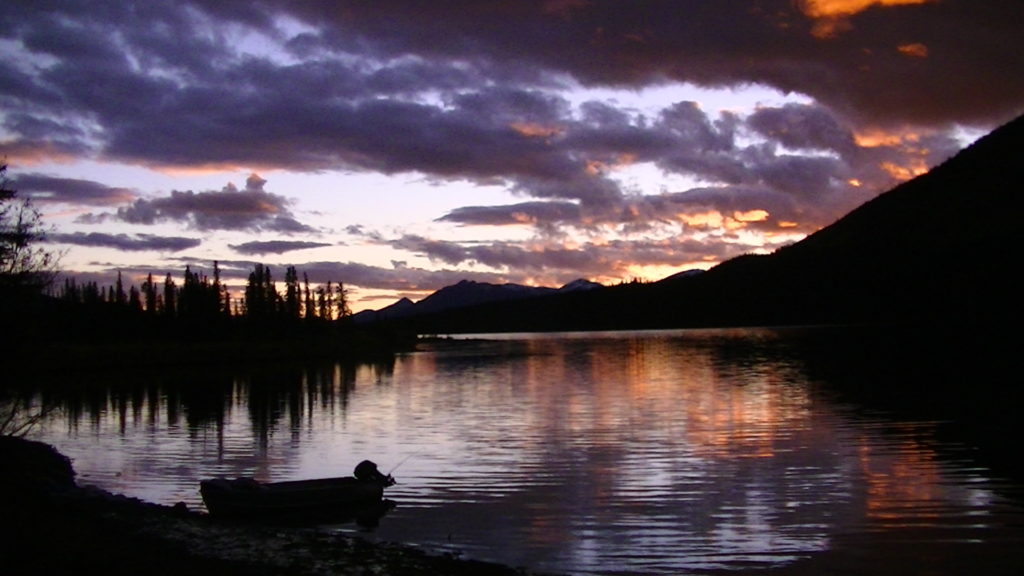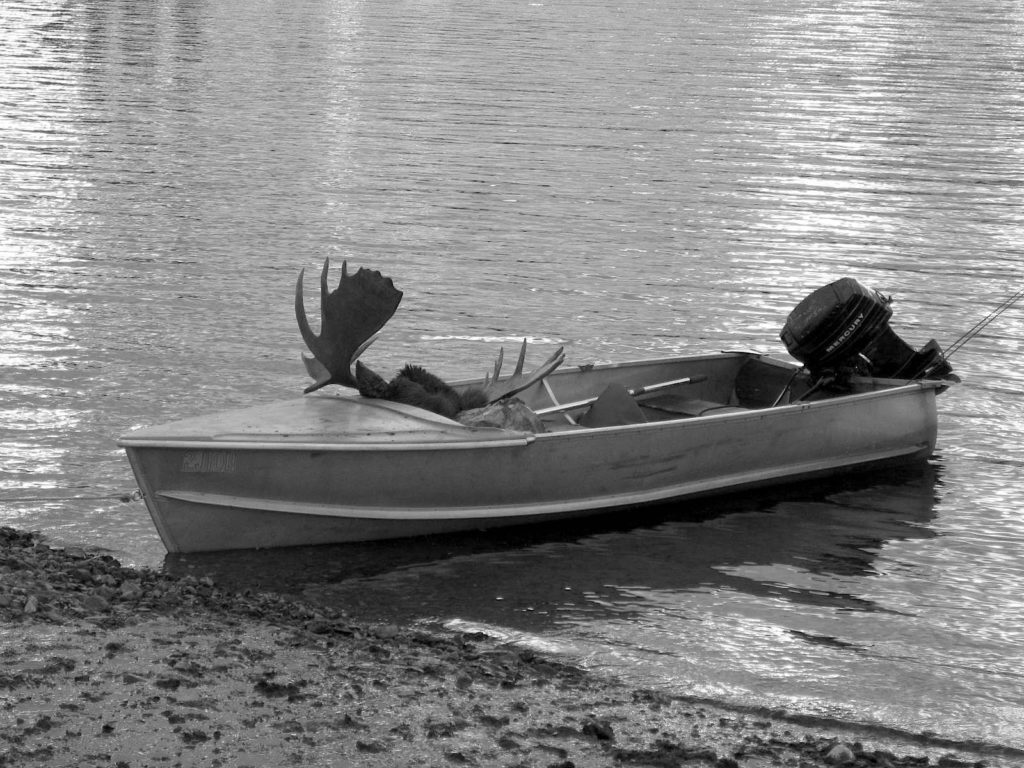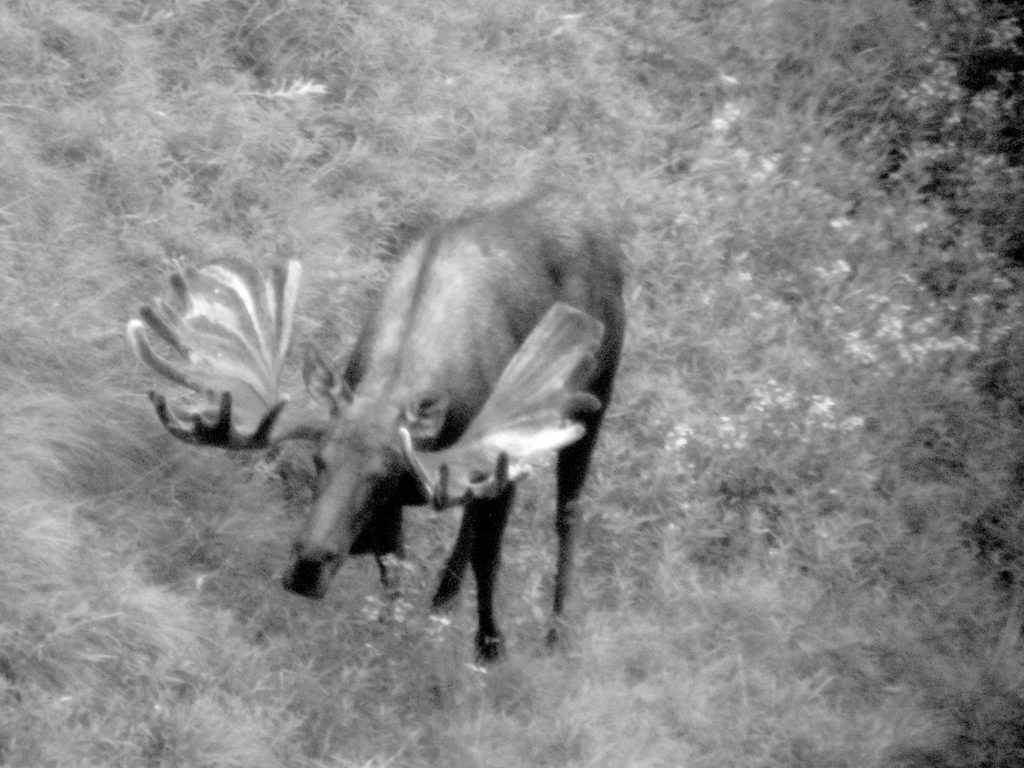There are countless things to consider when you start thinking about your first Northern moose hunt. When you start the planning process, there always seems to be no end to the options and questions. Do you take on the challenge of planning it yourself? Should you hire an outfitter who brings his knowledge, experience and access to your hunt? Do you want to use horses or hunt from ATV’s and trucks? What about a float hunt on a river or lake? While planning any hunt can be complex, preparing for that first Northern moose hunt can be overwhelming, particularly when there is a seemingly endless list of options of how and where to hunt.
Moose can be hunted across vast tracts of Canada and the US and hunting style, game quality and the overall experience can and will vary substantially. Moose hunts are accessible to many if not most hunters, whether that’s DIY or guided, and there aren’t many animals that can compete in terms of the meat haul you’ll take home if you’re successful.
Moose are the largest members of the deer family—in fact they’re the largest antlered animal in the world—and can be found throughout most of the world in the sub-arctic and temperate zones. They are found in Europe in countries such as Sweden and Norway and into Russia, the Czech Republic and Belarus, for example. In North America their range spreads throughout most of Canada and down into the US, with populations found from New England to Minnesota, as well as Wyoming, Colorado, Utah, and, of course Alaska. There are approximately 500,000 to 1 million moose living in Canada alone. If you’ve ever had the chance to see a moose up close, you’ll know that a moose isn’t exactly the smallest animal walking the mountains and woods. In fact, an Alaskan bull moose can push 1,500 pounds.
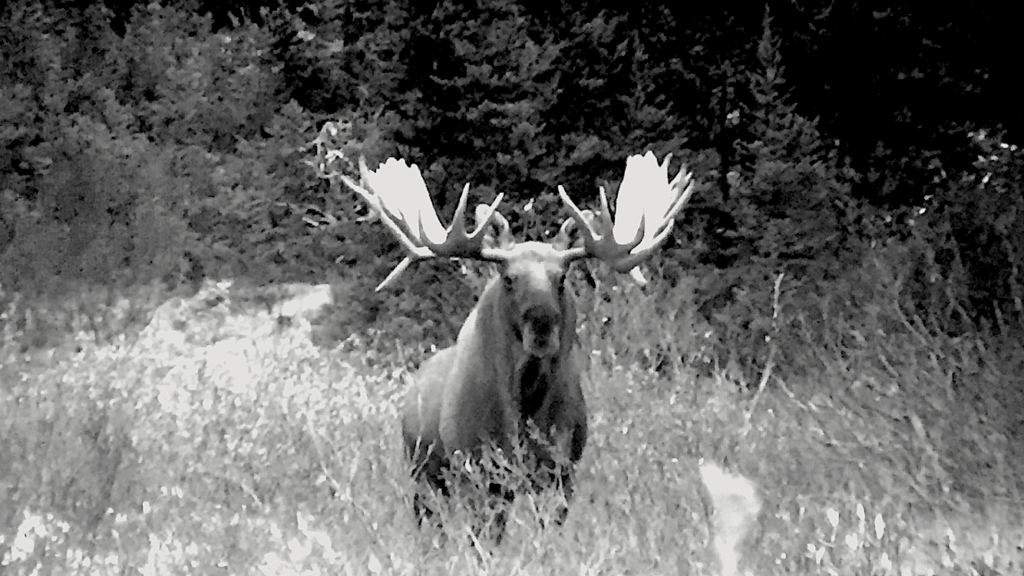
As you can imagine, hunting something that big comes with its own unique set of challenges, the least of which is simply finding them. The good thing is you’ll probably be set for moose meat for a while, but the other side of that coin is figuring out a way to get all that protein down off the mountain—even boned out you could easily be looking at 400-500 pounds of extra weight that needs to be packed out. This is where there’s an advantage to having a guide, at least for your first hunt. The time and energy you’ll save by having a plane or boat handy to pack out your meat is worth the expense. By no means do you have to go this route, but if you’ve never hunted a moose before, it’s probably the way to go for your first hunt if you don’t have a friend or family member to show you the ropes.
In reality, the preparation and planning that is put into your hunt will make the difference between it being the trip of a lifetime or a miserable disaster. As with most things, failing to plan is planning to fail and proper preparation is the key. Knowing what you’re getting into, or at least having a reasonably good idea of what to expect, can save you a lot of time, money and grief.
For the purposes of this article we’re going to consider a “Northern” hunt to be one in Western Canada, Alaska or the Northern Territories of Canada.
The differences you experience during your hunt, and the style of your hunt you undertake, will be dependent on which region you decide to hunt in. In Central BC or Alberta, with the logging and forestry roads giving you much easier access to the backcountry, you’ll most likely be able to use trucks and ATV’s. This is a plus if you are looking for a less physically demanding hunt, but the downside is the hunting often isn’t as exceptional as a hunt in either Northern BC and Alberta or the Territories or Alaska. The ease of access means there’s a better chance that you’ll not only see people when you’re hunting, but there’s a good chance that you’ll either get in the way of someone’s hunt or they’ll get in the way of yours — if it does it won’t be deliberate, but the chances are greater it will happen in Central BC or Alberta than in the far North. If being alone is important to you when you hunt, consider going as far North as your time and budget allow. Central BC and Alberta hunts are also usually more affordable, but the quality of the animals is not generally as high as if you were to plan or book a hunt in Northern BC, the Territories or Alaska. One of the main benefits to hunting these regions is time. They’re usually within an easy flight or drive from a major airport and with the roads and trails left over from industrial use you can cover tons of ground every day and increase your chances of success in a shorter time frame. This can’t be said up for a hunt in the far North where it can take days just to get to base camp when you include flights or drive time and then transport into the hunting area be that by float or bush plane, jetboat or horse.
Northern BC and Alberta are generally more difficult to access than other parts of the two provinces, which means higher quality moose, and less hunting pressure. Northern BC in particular is tough and why horseback hunting is still one of the most effective ways to hunt moose in that province. For most people, the idea of a horseback hunt brings up images of times gone by and should be experienced at least once in a hunter’s life. ATV’s and trucks can still be used to hunt in some of the Northern regions of both provinces, usually in close proximity to smaller communities established to service the mining or oil and gas industries. These areas can still hold fantastic hunting opportunities. Cut lines, decommissioned roads, well heads, and old cut blocks (aka clear cuts for our US readers) can help you cover a lot of ground during your hunt, even in these remote areas. Once you get more than a few hours North of the big cities in the South of BC and Alberta, you don’t have to go far off the beaten path to be in the wild. The farther North you venture and the farther from civilization you get the more likely you’ll be flying, jetboating, canoeing/rafting or horse-packing into your moose hunting grounds. This comes at a cost and with fly-ins the risk of losing precious hunting time to weather. This is a fact often overlooked by those caught up in the romantic notion of a fly-in hunt. There can be hours and sometimes even days of boredom and stress while you wait for the weather to clear to allow you to get in or out of your hunting area.
More than likely, if you book a hunt with an outfitter, you will either be hunting out of a boat or horseback hunting. No matter which region you choose, hunting moose from horseback gives you the opportunity to hunt off the beaten path in the backcountry, putting you into remote country not readily accessible to most of the general public. This is true whether you’re in the high North or the middle zones of BC and Alberta. It gives you the freedom to hunt a variety of different habitats and landscapes, from high mountain basins just below alpine, to the valley bottoms and edges of lakes and rivers. This allows you to adapt your hunt to the conditions and the season and why horseback hunting is one of if not the most effective ways to hunt moose.
I have found that bull moose in Northern BC and the Yukon often live in high, willowed basins. Once the rut starts, the bulls leave these spots to find cows. They return to these high basins for a period of time after the rut is over before moving to their winter range. By using horses, no matter what part of the season you are hunting, you have the flexibility to go where the moose currently are. It’s definitely more physically demanding than truck and ATV hunting, but the rewards can be phenomenal! If this is up your alley, you could be one of the few who gets the privilege to see and experience the remote beauty of the North.
Hunting from a boat offers different advantages than hunting on horseback. It enables you to hunt the low-lying wet, marshy and boggy country off lakes and rivers where using horses isn’t practical. Boats, especially canoes and rafts are also deathly silent and allow you to call and float your way through some phenomenal habitat. Typically, you will follow the shoreline while glassing and calling, sometimes calling right out of the boat, other times beaching the boat and walking into little secluded meadows and open patches to set up and call. Another advantage to boat hunting moose is that if you time your trip right, you will get to hunt the rut. You can hunt the rut using different styles of hunting, as there is a period within the season where bull moose leave their summer range and hidey-holes, to go look for and gather cows to breed, which generally live in lower elevations near lakes and rivers. By hunting the places you know the cows are, you are putting yourself in the spot right where the bulls are, or where they are going to inevitably end up. It can happen that you are glassing and calling on the same lake for seven days straight and not see a single bull and then suddenly a big old mature bull just shows up seemingly out of nowhere.
If you are one of the fortunate people who hit the rut just right, there are times when the action can be non-stop and you’ll feel like you’ve hit the jackpot. Boat, canoe or raft hunting can be highly effective at the right time of year and should be a top consideration for any planned moose hunt. They are nicknamed the “swamp donkey” after all! From the lower latitudes of BC and Alberta to the tip of their Northern range in the Territories and Alaska, at some point in the season you’ll find big bull moose around a body of water. This method is very appealing if you’re new to moose hunting as well or not as physically able to pack hundreds of pounds of meat day in and day out. When hunting around water, odds are the moose will go down in or close to the water, and although quartering and boning a moose that’s gone down in the water can be an adventure in itself, you’ll be close to your boat, canoe and raft and can move a lot of meat very efficiently this way.
The Yukon and Northwest Territories and Alaska are frequently considered the top two hunting destinations in North America for hunting large moose. This vast wilderness with low hunting pressure is home to the biggest moose in North America – the Alaska/Yukon Moose, and they reach sizes that make a trophy moose in, say, Ontario look like a whitetail. While hunting this region is the most expensive, like a lot of other things in life, when it comes to planning or booking hunts, you get what you pay for. On a guided hunt in the Yukon or Alaska most of the access will be by float plane. You’ll get flown in to remote camps on lakes or rivers, where your guide will be ready and waiting for you. In my opinion, hunting in the far North is the most spectacular moose hunting experience there is. Low hunting pressure, difficult access and challenging terrain all contribute to it being North America’s top moose hunting destination and a phenomenal adventure. For our US readers, Alaska is also somewhere you can plan a DIY trip and a float trip is an accessible and great way to get your feet wet…literally! For more on this topic, read Larry Bartlett’s Plan Like a Pro book excerpt from the December 2014 Issue.
At the end of the day, it is the people around you that determine if a trip is successful – whether or not you return home with the trophy of a lifetime – so that is a key consideration when you plan your own hunt. The people you hunt with will determine where you hunt (time/cost/accessibility), what hunting method you’re going to use (cost/physical ability), along with how long to plan your hunt for (time/cost). If you’re an experienced hunter with the knowledge and know-how, this shouldn’t be tough to manage but if it’s your first jaunt North it’s a good idea to go with someone that’s done it before and has very similar goals.
That being said, if you do your homework thoroughly and plan all the details well, you can have the trip of a lifetime at a rate more affordable than hiring an outfitter who would manage all the details for you. There’s a point when you just have to do it and get out there and learn from experience so don’t let lack of experience hold you back. Just pick your destination, hunting group and hunting style accordingly and dive in! You’ll make mistakes but that’s just part of the process of learning.
Regardless of where or how you decide to plan your first Northern moose hunt, it will be an experience you never forget. Talk to as many different outfitters and experienced hunters as you can, and ask every question you can think of, no matter how stupid you might think it is. The experienced hunters all had “dumb” questions to ask at some point themselves! If it’s a question you want an answer to, ask it. Odds are, you won’t be the first person to ask and you won’t be the last.
Each and every hunter has his or her own methods and each outfitter’s style of operation will be slightly different than the next. Thoroughly plan the hunt that sparks your interest, or find the outfitter that best fits your needs and preferred hunting style and you’re on your way to an incredible experience you will never forget. And when it comes time to pull the trigger, take your time and try not to be awed at the massive creature in front of you. A big Northern moose is one of the most impressive animals you’ll ever see in the wild. Take a moment to soak it…and don’t miss!
About The Author:
Spending the bulk of his time guiding in the Yukon Territory, Jared specializes in horseback hunting Dall and Stone sheep, mountain caribou, Alaska-Yukon moose, and grizzly bears. His spring guiding season finds him in Southern BC, hunting the giant black bears of Vancouver Island and the late fall season finds him guiding for the big mule deer of Southern Alberta. Jared is a BC resident and a truly dedicated, professional hunting guide.


